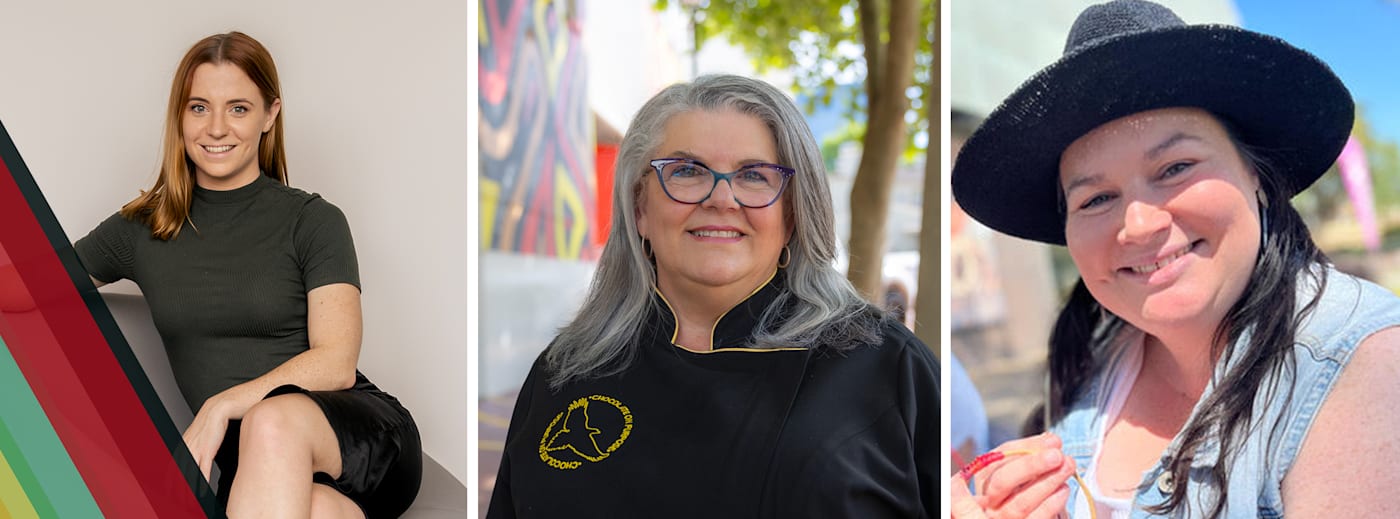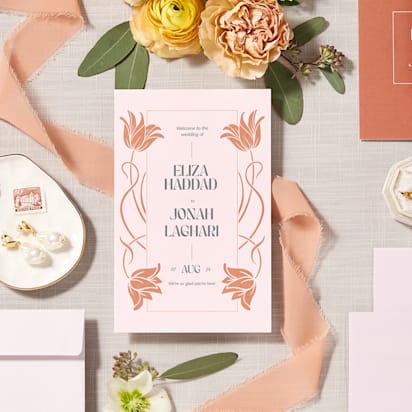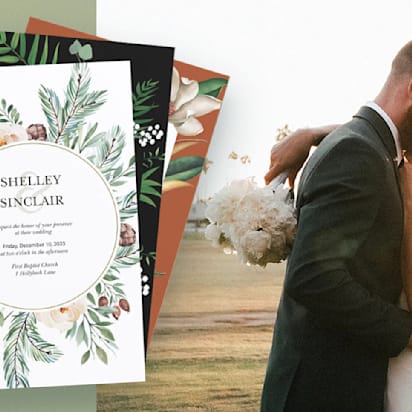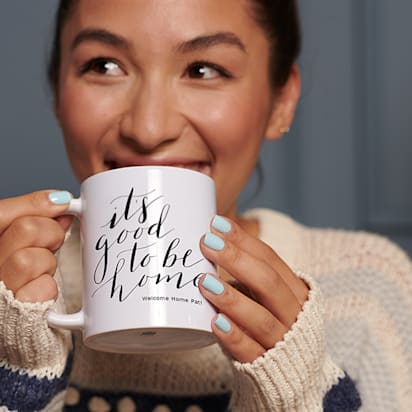This year’s NAIDOC Week theme “The Next Generation: Strength, Vision & Legacy”, celebrates both the rich past and the bold future being shaped by Aboriginal and Torres Strait Islander voices. To mark this celebration, VistaPrint is proud to spotlight three First Nations entrepreneurs behind Chocolate on Purpose, Leah Paige Design and Little Black Duck, whose work embodies that theme as they forge inspiring, new paths in business.
In this special feature, founders Fiona Harrison, Leah Bennet and Ashleigh Pengelly share how they bring their values into their work and their hopes for the next generation of Aboriginal and Torres Strait Islander-owned businesses. Their stories are filled with wisdom, proud milestones and powerful advice for anyone looking to build a business with heart.
Fiona Harrison
Chocolate on Purpose
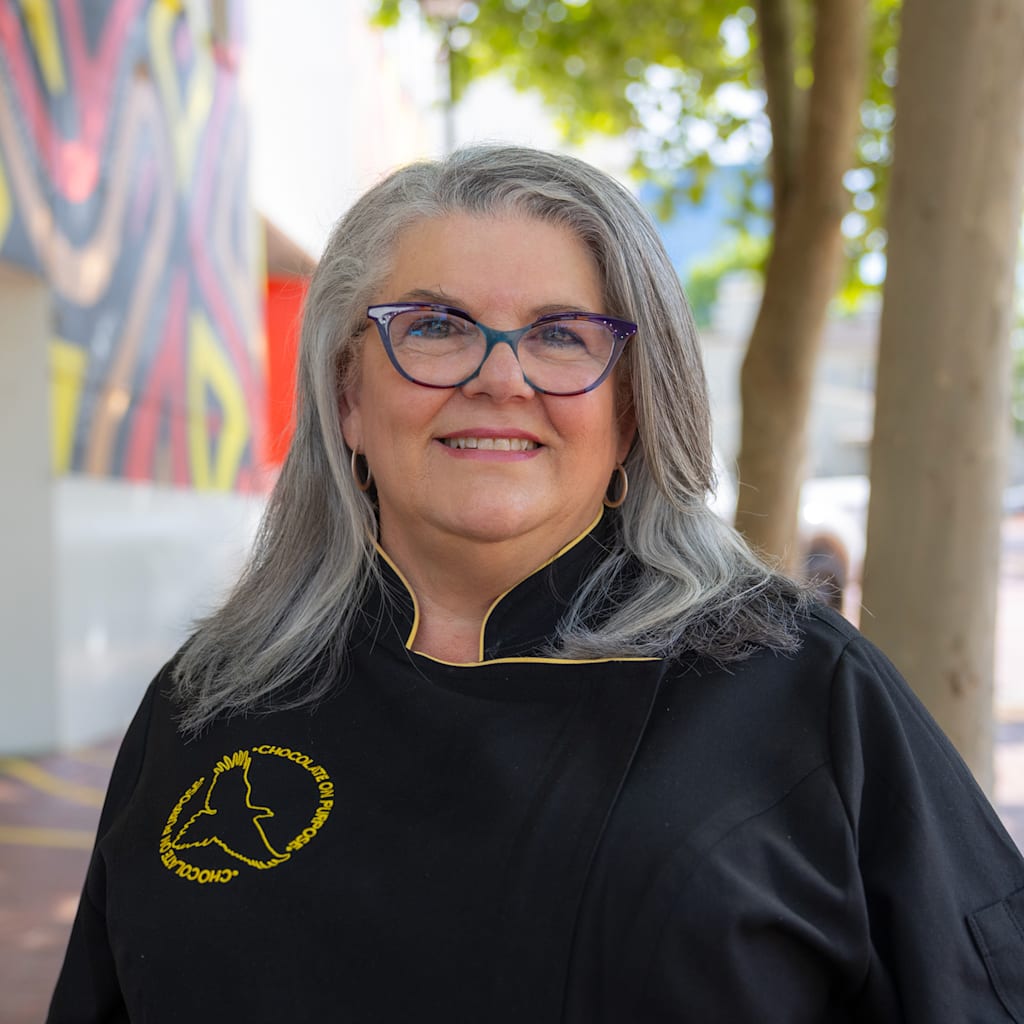
Can you tell us how your business began and what sparked the idea?
Chocolate On Purpose is Australia’s first Aboriginal chocolate business, a female led, regionally based, certified social enterprise. I share First Nations Culture & ancient wisdom of our people through storytelling with chocolate, and each NAIDOC Week I tell the story of that year’s theme through a special chocolate creation. This year the theme, “The Next Generation: Strength, Vision & Legacy” spoke to me in terms of Waynha – the Wiradyuri word for transformation.
To tell this story, I’ve created our Budyabudya (Butterfly) Collection – three chocolate butterflies featuring native botanicals sourced from Aboriginal growers: Ooray (Davidson Plum), Daguba (Riberry), and Gulalung (Finger Lime).
My Budyabudya artwork depicts Aboriginal iconography symbols to represent this story, and VistaPrint created Gift Swing Tags showcasing this artwork to decorate my NAIDOC Week Gift Bags.
This Aboriginal iconography tells our 60,000+ year story of resilience. The budyabudya represents how Cultural wisdom flows between generations – just as the butterfly flies from one native flower to another pollinating with its stories, we have shared knowledge passed from Ancestors to Elders to Adults to Children for over 60,000 years. The Aboriginal iconography on the wings of the butterfly on my NAIDOC Gift Swing tag tells this story: Elders teaching Children, footprints of our ancient journey on Country, Meeting Places where knowledge transfers, and shields representing our bravery through colonisation.
How does your business celebrate and promote NAIDOC?
Through NAIDOC Week, I spotlight the incredible Aboriginal botanical growers in our supply chain and demonstrate how the next generation carries forward both our ancient plant-knowledge systems and our strength to transform adversity into opportunity, just like the Budyabudya emerging from its chrysalis, stronger and more beautiful than before.
We leverage NAIDOC week to share cultural knowledge through storytelling, and demonstrate how chocolate can be a vehicle for preserving and celebrating our living culture. Our social media becomes a platform for education about native botanicals, their traditional uses, and the contemporary Aboriginal businesses keeping these knowledge systems alive.
How do you bring your culture into what you do or make?
Culture isn’t something I add to my chocolate, it IS my chocolate. As a proud Wiradyuri woman, I embed cultural knowledge into every aspect of my business. My native botanicals come from Aboriginal growers where possible, to support and advocate their greater participation above the current 2% despite the Australian Native Bushfood & Botanical Supply chain being built on our Cultural and Intellectual Property. I support sustainable practices and the importance of keeping traditional plant knowledge systems alive.
Each product tells a story. For example, my Walking On Country Chocolate Bar – Plant Based Vegan Chocolate with Quandong is a tablet bar, packaged in a compostable cellulose bag, and embossed with footprints depicting my Wiradyuri old people and ancestors caring for the rivers, tablelands and plains as they walk Ngurambang (Country) over a 60,000+ year continuous caretaking journey. Even my business name reflects my purpose: using chocolate to empower Aboriginal people in the supply chain (especially Aboriginal women aged 45+ because traditionally we are the matriarchal plant holders of these ancient plant knowledge systems), while creating pathways for economic self-determination for us and our communities.
This year’s NAIDOC Week theme is “The Next Generation: Strength, Vision & Legacy.” What’s your hope for the next generation of Aboriginal and Torres Strait Islander business owners, and what advice would you give them as they carry that legacy forward?
My hope is that the next generation of Indigenous business owners never have to swim alone like I did for so many years. Through initiatives like our Ngunggilanha project, Chocolate On Purpose is creating employment and training opportunities for Aboriginal women, showing them that business can be a vehicle for Cultural preservation and Community empowerment.
My advice: Trust in the strength of our Aboriginal ways of knowing, being and doing – the reciprocity and Community care that’s always been at the heart of how we do business. We were the first traders on this continent, it’s in our DNA and we know how to do it holistically and sustainability. Your Cultural values aren’t something you need to add to your business model; they ARE who you are, therefore they are flowing through your business model. The knowledge systems our Elders have maintained for 60,000+ years are incredibly valuable in today’s economy, stand proudly in that knowledge.
Connect with other Indigenous business owners (for example through your state Indigenous Business Chamber), seek mentorship from our mob, and remember that when we support each other’s businesses we continue to grow the ‘blak-economy ecosystem’ to create the economic foundation for our true self-determination. Be visible, be proud of who you are and where you come from, and pave the way for those coming behind you. Our success creates pathways for the next generation to walk with confidence, knowing they’re part of something much bigger than individual profit – they’re part of caring for mob.
What’s something you’re really proud of in your business journey so far?
I’m most proud of transforming personal healing into Community empowerment. After overcoming intergenerational trauma and PTSD through the healing properties of native botanicals, I could have kept my story private, which had been my way. Instead, I built Australia’s first Indigenous chocolate business contributing to addressing the complex issues in my supply chain, working towards seven of the UN Sustainable Development Goals, and soon employing Aboriginal women aged 45+ – the demographic of all Australian women most at risk of social isolation and homelessness.
I’ve created a supply chain that empowers Aboriginal botanical growers, preserved Cultural knowledge through storytelling, and proven that a small regional business can compete nationally while staying true to Cultural values. But what makes me proudest is the ripple effect – every chocolate sold strengthens our representation in supply chains worth over $300 million annually, and every story shared helps preserve our living Culture for future generations.
Leah Bennet
Leah Paige Design
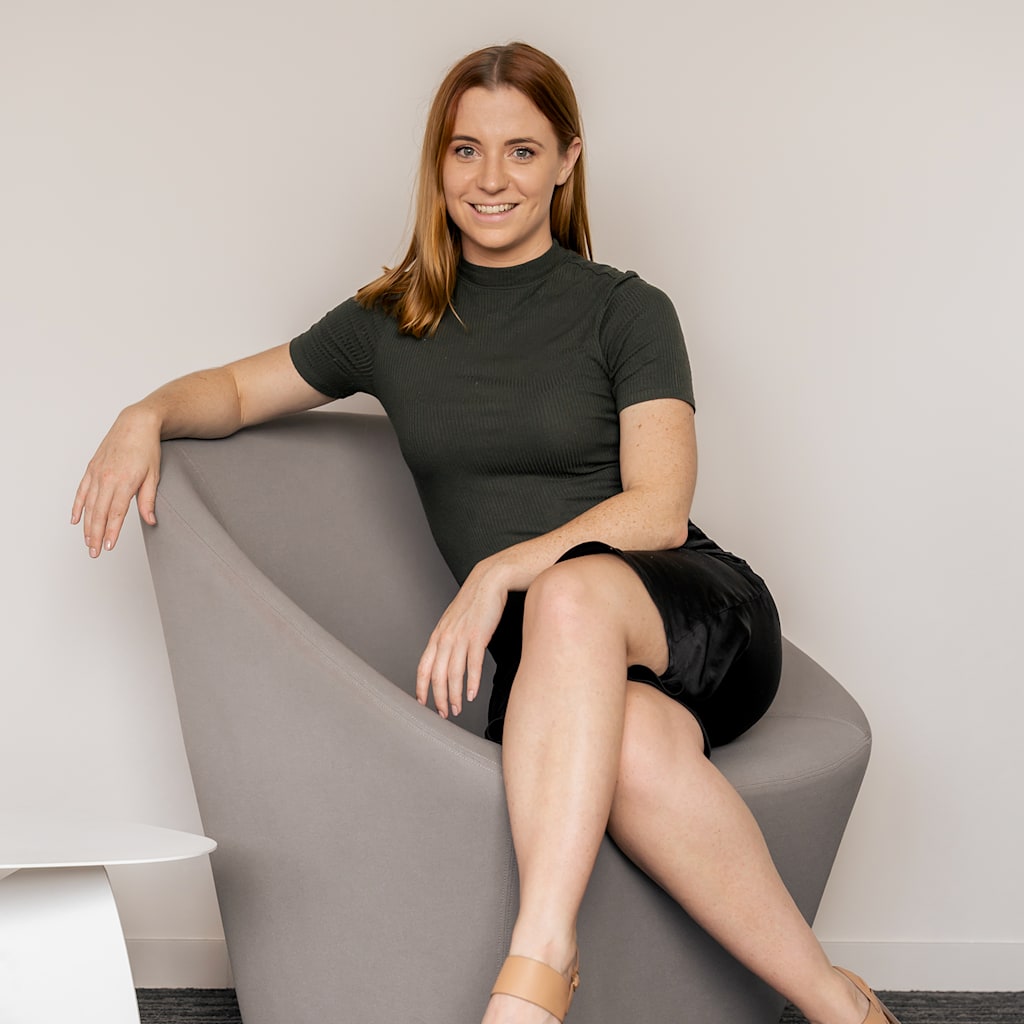
Can you tell us how your business began and what sparked the idea?
My business began purely as a way for me to separate myself from other designers in the industry and have a unique point of difference. However, the more I worked in the design space the more I recognised the need for early engagement with Aboriginal businesses, artists & advisory groups to ensure culture was included in a meaningful way that focused on the outcomes it created, rather than the aesthetic opportunity to tick a box. I saw this as a way to learn more about my own heritage whilst also creating the opportunity for all people, both Non-Indigenous and Indigenous to connect with local stories in a tangible way.
How does your business celebrate and promote NAIDOC?
We don’t specifically celebrate NAIDOC week as such, because throughout any week of the year we seek opportunities to support fellow Aboriginal businesses, celebrate our identity and advocate for change within the design industry.
How do you bring your culture into what you do or make?
With every design project I approach, inspiration comes from my culture. I look at where the project is located, research local history, connect with Advisory groups where possible and consider how I can create a space that is connected to Country. This could be through specific colour palettes and material selections, providing direction of artist engagement, the flow of the space, lighting, spatial planning, and much more. The possibilities really are endless. This then leads into how these elements are applied considering the environmental impact of materials, the outcomes these design selections generate and how the design can have a positive impact on the community.
This year’s NAIDOC Week theme is “The Next Generation: Strength, Vision & Legacy.” What’s your hope for the next generation of Aboriginal and Torres Strait Islander business owners, and what advice would you give them as they carry that legacy forward?
I would love to see more mobs moving into the design space. I think there is so much opportunity here and so many creative, artist skills carry over into design. My vision is for LPD to support alternative pathways as I feel it can be a difficult industry to break into without following a typical school, university or take on work experience trajectory and I would love to change this. My advice for the next generation of Indigenous business owners would be, don’t be afraid to own your space and challenge things you disagree with. Hold yourself and the people you work with accountable to what you set out to do and don’t let other people dilute your vision and your goals. There will be a lot of businesses that want to connect with you but may not be doing so for the right reasons, so trust your gut and if things don’t feel right don’t be afraid to say no.
What’s something you’re really proud of in your business journey so far?
I am proud that I have built my business to a point where I do feel comfortable following the above advice. There’s been a lot of milestones and big projects that I have been super proud of over the years, however I think the biggest thing I am proud of is the integrity I’ve built behind the business. There have been times where I’ve been in a room with people with far more experience than me and I have had to push back and say “no, we really need to do it like this,” – which is incredibly nerve racking but someone needs to be challenging the way engagement takes place in the design process. I am also incredibly proud of the projects where I have incorporated elements into the design which have then led onto opportunities for other Aboriginal businesses and I have seen them grow their own business all because the clients thought to engage with a cultural designer early on in the process. This makes me incredibly proud and this is why I am doing what I am doing.
Ashleigh Pengelly
Little Black Duck
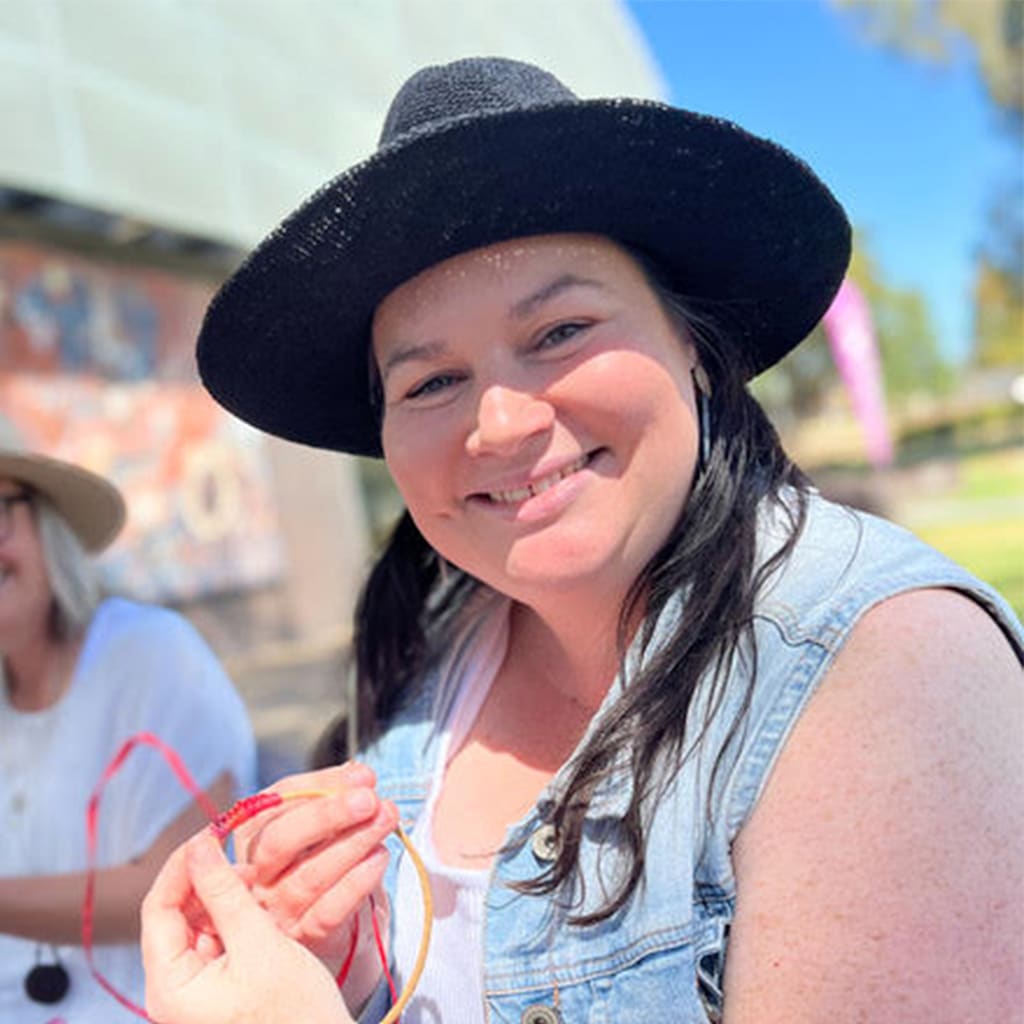
Can you tell us how your business began and what sparked the idea?
As all great businesses do, of course — in my spare bedroom, haha! Little Black Duck actually started by accident, really. I was working in local government at the time, supporting other Aboriginal creatives who wanted to turn their hobbies into businesses. I remember throwing out the idea of someone painting teapots — I even tried to give the idea away. Wild, looking back now! But no one took it up, so I ended up painting a few myself while they worked on their own things… and they sold out in two days. I was blown away. After that, things just kept growing. Ten years later, it’s now my full-time gig, and I honestly love it. I’m a self-taught artist and business woman, so there’s been a lot of learning (and failing) along the way — and I still feel like I’m making it up as I go. But honestly, that’s half the fun.
How does your business celebrate and promote NAIDOC?
NAIDOC’s always been a big deal for me. I’ve been on our local NAIDOC Committee for over a decade and now serve as Chair, so I’ve been deep in the community side of things — organising events, awards, balls, you name it- and when we aren’t organising the events we’re there supporting others. Now with the business I also get to financially support and create events too so that’s really special to me. NAIDOC Week always gets crazy busy with collabs and workshops and sharing all that is happening. It’s a time to celebrate how far we’ve come, to honour those who paved the way, and to keep pushing forward — loud, proud, and unapologetically Blak. One of my favourite NAIDOC traditions is heading out on Country with some sistas. It’s always such a grounding day — sharing culture, stories, and that deep sistahood connection. That mob connection is what NAIDOC feels like to me.
How do you bring your culture into what you do or make?
Culture is in everything I do — it’s not something I have to switch on, it’s just there. Djon Mundine once said in a group I was facilitating that any art an Aboriginal person makes is Aboriginal art — and that stuck with me. Whatever we create, we create with heart, and with that comes culture. Whether I’m hand-painting a teapot, making earrings, or designing a candle label, there’s always a story behind it. I draw on my Wiradjuri heritage — sometimes in a traditional sense, sometimes in a modern way, but it’s always real. I see our culture as a living thing- it evolves, just like we do. And my work reflects that — past, present, and future, all woven into one.
This year’s NAIDOC Week theme is “The Next Generation: Strength, Vision & Legacy.” What’s your hope for the next generation of Aboriginal and Torres Strait Islander business owners, and what advice would you give them as they carry that legacy forward?
I hope they back themselves. Even when it feels like they’re winging it — which, let’s be real, is most of the time when you’re building something new. Our mob has been innovators forever. Business isn’t new to us — it’s just that we’re operating in systems that weren’t made for us. So don’t shrink yourself to fit them. Bring all of you — your humour, your culture, your community — to the table. There’s power in that. My advice? Be bold, be curious (always!), ask for help when you need it, and remember: your voice, your ideas, and your way of doing things are needed. You don’t have to do it how they’ve always done it — that’s the point.
What’s something you’re really proud of in your business journey so far?
Honestly? That I’ve built this thing from the ground up, on my own, as a First Nations woman — and ten years later, it’s still going strong. That’s wild to me. I’ve turned my art into a business that supports my family, sparks conversations, and lands in homes all over the country — and overseas! People have brought my pieces into really sacred spaces — into grief, into their birthing rituals, into celebration, into their everyday lives — because of what the work represents. That’s not just selling products. That’s legacy. And I am so bloody proud of that.
Show your support for Chocolate on Purpose at https://www.instagram.com/chocolateonpurpose/, for LPD at https://www.instagram.com/leahpaigedesigns/ and for Little Black Duck at https://www.instagram.com/littleblackduckaus/. For more inspiring small business content, follow us on social @vistaprintaustralia and visit our Ideas & Advice blog on our website.
